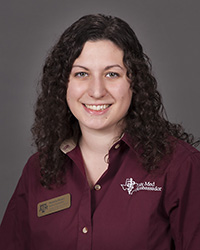 Vet school is a dream come true for all of the students currently enrolled in Texas A&M’s College of Veterinary Medicine!
Vet school is a dream come true for all of the students currently enrolled in Texas A&M’s College of Veterinary Medicine!
Despite this, it can be easy to become bogged down in exams, personal struggles, and commitments, at times, especially at the end of the semester as finals approach. This is why since starting school, many of us have taken to heart a concept explained to us during our first-year orientation.
“Find the Joy” is a mantra that has been repeated more times than I can count. Whenever my class has been overwhelmed with a particularly challenging exam or week, someone has always reminded us to find the joy; it is a reminder to look at the little things in life that make you happy to bring you back to perspective that your struggles will pass and are not as insurmountable as you currently think they are. And that no matter what, there is joy in your life, if only you seek to find it.
Each semester, right before finals week, the Texas A&M chapter of the Student American Veterinary Association (SAVMA) hosts something called “Find the Joy” week. It is a series of events spanning over the course of a week specifically for the vet students. All of these events are free or discounted for the students as a way for them to relax and take a little bit of time being active, creative, or just away from their books.
I am currently the secretary of SAVMA and we just finished planning the events for this year’s “Find the Joy” week. The events this year range from a class at You Paint It, yoga, bingo, an escape room, ice skating, and more. I’m organizing the You Paint It class and am looking forward to relaxing with my classmates and showing just how horrible my artistic skills are. But it is in the name of “Find the Joy” and a good cause.
